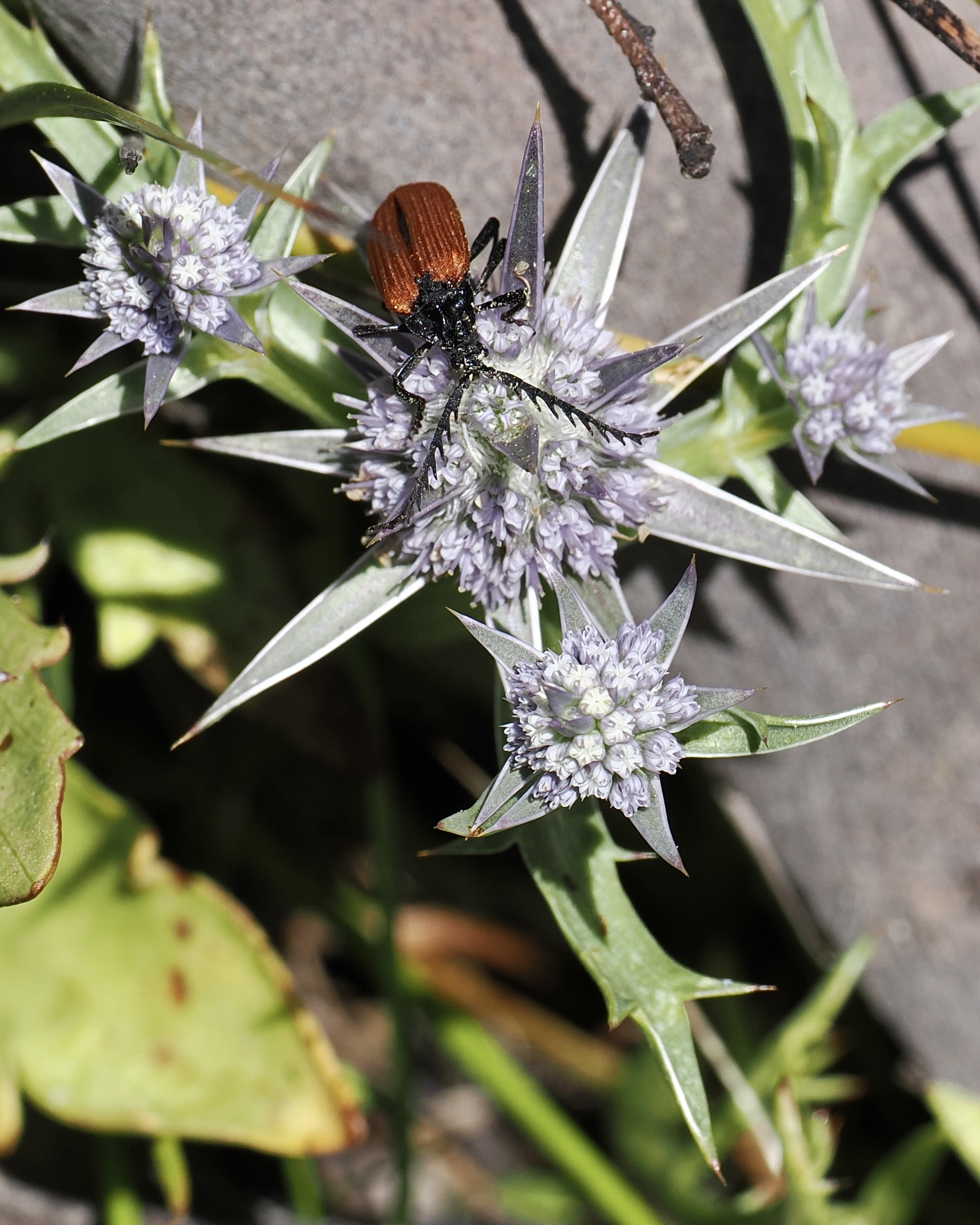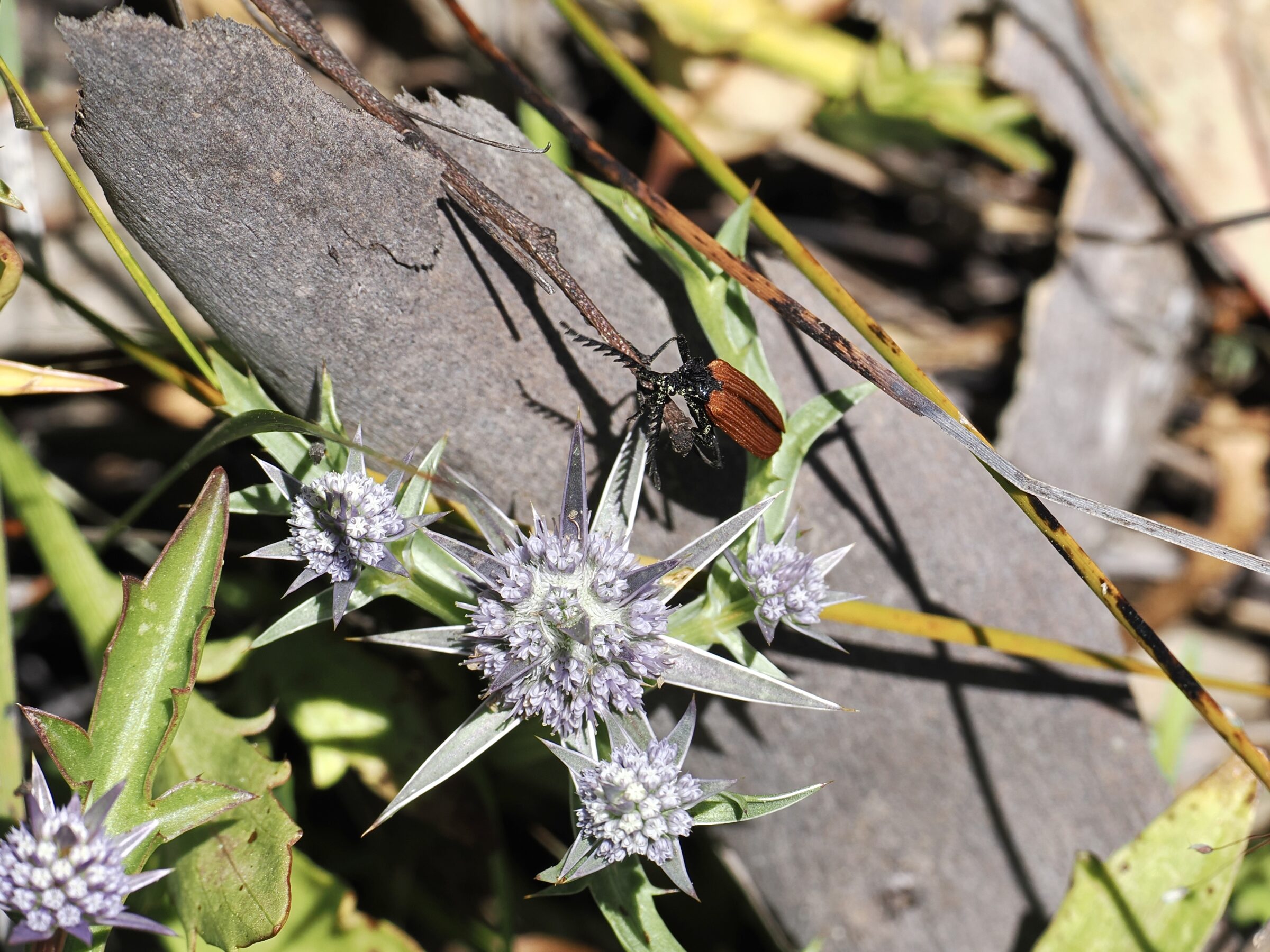This post’s six-legged hero is not a Christmas beetle, and the flower which s/he is targeting (and, thereby, probably pollinating) is one of several related “devils”.
These handicaps notwithstanding, “handsome beetle + star-shaped flower head” yields a “Christmassy” image…however accidentally!
Insect-wise, you are looking at a member of a large, globally “cosmopolitan” family which has many genera.
Lycidae – known as “lycid beetles”, or “net-winged” beetles – are toxic/offensive to most predators.
Their appearance “advertises” their inedibility.
Natural selection has ensured that not a few entirely-other, eminently-edible beetles seek “protection” by aping lycid beetles’ “look”.
Australia is home to more than 200 known and named lycid beetle species, most of which are nectar feeders.

Plant-wise, our hero is one of more than 250 species in the genus Eryngium.
Just seven known/named Eryngium species are endemic to Australia.
Collectively, these hardy annuals grow across much of Oz.
More than one species’ members are known as “blue devils”.
I am almost sure that the pictured “blue devil” is Eryngium pinnatifidum.
This species is endemic to southwest Western Australia, only.
In 2015 it was one of four WA-endemic flowering species to appear on a postage stamp.
Click this to see this particular blue devil’s range.
